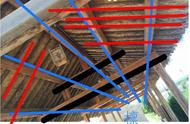长城,又称万里长城,世界中国的七大奇迹之一,中国古代的军事防御工事,它不是一道单纯孤立的城墙,而是以城墙为主体,同大量的城、障、亭、标相结合的防御体系。明朝是最后一个大修长城的朝代,今天人们所看到的长城多是此时修筑 。
The Great Wall, also known as the Great Wall, is one of the seven wonders of China in the world. The military fortifications in ancient China are not a simple isolated city wall, but a defensive system with the city wall as the main body and a large number of cities, barriers, pavilions and landmarks...
长城资源主要分布在河北、北京、天津、内蒙古、黑龙江、青海、新疆等共15个省、自治区、直辖市。现存长城文物本体包括长城墙体、壕堑、界壕、单体建筑、关堡、相关设施等各类遗存,总计4.3万余处(座/段)。
The Great Wall resources are mainly distributed in 15 provinces, autonomous regions and municipalities directly under the Central Government, including Hebei, Beijing, Tianjin, Inner Mongolia, Heilongjiang, Qinghai and Xinjiang. The existing cultural relics of the Great Wall include the wall, trench, boundary trench, single building, fortress, related facilities and other relics, totaling more than 43000 (sets/section).

1961年,长城被国务院公布为第一批全国重点文物保护单位。1987年,长城被列为世界文化遗产。
In 1961, the Great Wall was announced by the State Council as the first batch of national key cultural relics protection units. In 1987, the Great Wall was listed as a world cultural heritage.
五、苏州园林——园林之城
苏州古典园林,亦称“苏州园林”,是位于江苏省苏州市境内的中国古典园林的总称。苏州素有“园林之城”的美誉,境内私家园林始建于前6世纪,清末时城内外有园林170多处,现存50多处,对外开放的园林有19处。园林占地面积不大,但以意境见长,以独具匠心的艺术手法在有限的空间内点缀安排,变化无穷。
Suzhou Classical Gardens, also known as "Suzhou Gardens", is the general name of Chinese classical gardens located in Suzhou, Jiangsu Province. Suzhou is known as the "Garden City". The private gardens in Suzhou were built in the first six centuries... It is decorated and arranged in a limited space with ingenious artistic techniques, which is infinitely changeable.
以拙政园、留园为代表的苏州古典园林被誉为“咫尺之内再造乾坤”,是中华园林文化的骄傲。1997年,苏州城内的四座园林以苏州古典园林之名作为中国园林的代表被列入《世界遗产名录》。
Suzhou classical gardens, represented by Zhuozheng Garden and Liuyuan Garden, are known as "the reconstruction of the universe within a short distance", which is the pride of Chinese garden culture. In 1997, the four gardens in Suzhou were listed in the World Heritage List as representatives of Chinese gardens in the name of Suzhou classical gardens.

六、赵州桥——天下第一桥
赵州桥,又名安济桥,是一座位于河北省石家庄市赵县城南洨河之上的石拱桥,因赵县古称赵州而得名。当地人称之为大石桥,以区别于城西门外的永通桥(小石桥)。赵州桥由匠师李春设计建造,唐宋明清各代均曾有过整修。其被视为目前世界上最古老、完好的大跨度单孔敞肩坦弧石拱桥,后由宋哲宗赵煦赐名安济桥,并以之为正名。
Zhaozhou Bridge, also known as Anji Bridge, is a stone arch bridge located on the Xiaohe River in the south of Zhao County, Shijiazhuang City, Hebei Province. It is named after Zhao County, which was called Zhaozhou in ancient times. Locals call it Dashi Bridge, which is different from Yongtong Bridge (Xiaoshi Bridge) outside the west gate of the city.
其建造工艺独特,在世界桥梁史上首创“敞肩拱”结构形式;雕作刀法苍劲有力,艺术风格新颖豪放,显示了隋代浑厚、严整、俊逸的石雕风貌,桥体饰纹雕刻精细,具有较高的艺术价值。2010年,赵州桥景区被评为国家AAAA级旅游景区。
Its construction technology is unique, which is the first "open shoulder arch" structure in the world bridge history; The carving technique is vigorous and powerful, and the artistic style is novel and bold, which shows the rich, neat and elegant stone carving style of the Sui Dynasty. The bridge body is finely carved and has high artistic value. In 2010, Zhaozhou Bridge Scenic Area was rated as a national AAAA tourist attraction.

永乐宫,原名大纯阳万寿宫,为纪念八仙之一吕洞宾而建,因地处永乐镇,俗称永乐宫, 国家首批重点文物保护单位,位于芮城县城北3公里的龙泉村东侧。
Yongle Palace, formerly known as the Great Chunyang Longevity Palace, was built in memory of Lv Dongbin, one of the Eight Immortals. It is located in Yongle Town, commonly known as Yongle Palace. It is one of the first batch of key cultural relics under national protection, and is located in the east of Longquan Village, 3 kilometers north of Ruicheng County.
永乐宫是我国现存最大、保存最为完整的道教宫观,同北京的白永乐宫,位于山西省运城市芮城县城北3公里的龙泉村东侧,是一座大型道教宫观,全真教三大祖庭之一(其他两座是陕西重阳宫、北京白云观)。1961年被列为全国重点文物保护单位。
Yongle Palace is the largest and most complete Taoist temple in China. It is located in the east of Longquan Village, 3 kilometers north of Ruicheng County, Yuncheng City, Shanxi Province. It is a large Taoist temple and one of the three ancestral halls of Quanzhen Taoism (the other two are Chongyang Palace in Shaanxi Province and Baiyun Temple in Beijing). In 1961, it was listed as a national key cultural relics protection unit.
永乐宫是元代道教建筑的典型,在建筑结构上,吸收了宋代“营造法式”和辽、金时期的“减柱法”,形成特有的风格。
Yongle Palace is a typical Taoist architecture of the Yuan Dynasty. In terms of architectural structure, it has absorbed the "construction method" of the Song Dynasty and the "column reduction method" of the Liao and Jin Dynasties, forming a unique style.
















